Parallel Worlds: South African Music in America
...
South African music has had a lasting influence and unlikely presence in American popular culture. From the rich harmonies and fabulous rhythms of The Lion King to pleasant, soothing melodies of “Mbube” (The Lion Sleeps Tonight) to the funky grooves of “Grazing in the Grass,” quite often Americans hear chart-topping hits without realizing that they are South African songs. South Africa is the only country outside of the United States with its own identifiable jazz tradition, and South African music has long had a strong relationship with African-American music, yet few Americans see the bonds and connections. To the American psyche, South African music represents something that is often appealing and surprisingly familiar, yet novel and unknown.
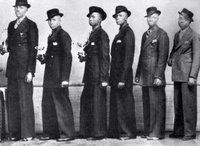
The contradiction and complexities of American and South African music are most profoundly and sadly entwined in “Mbube,” one of the most recognizable tunes in modern music. “In the jungle, the mighty jungle, the lion sleeps tonight…” is a lyric that resonates in almost everyone's mind. “Mbube,” was written by Solomon Linda (on the far left), a Zulu migrant worker who recorded the song at Gallo Studios in Johannesburg in 1939. Linda was paid 10 shillings (about $3.50) and signed away the rights to the song, as was the standard practice of exploitation of Black artists at the time.
In 1948, Pete Seeger heard “Mbube” on an old ‘78 and mistakenly translated the chorus as “Wimoweh” in a 1950 recording that first popularized the song in America. George Weiss and The Tokens added new English lyrics and turned the song into a smash international hit in 1962, about the same time that Linda died penniless in Soweto. Since then, artists ranging from Glenn Campbell and Chet Atkins to Brian Eno, REM and Nsynch have recorded the song, and, most recently, Disney featured “Mbube” in its box office powerhouse, The Lion King. Rolling Stone magazine estimates that the song has generated at least $15 million in composer royalties, while Linda’s grandchildren remain impoverished in Soweto and are suing Disney and various publishing companies for a portion of the profits.
But beyond the sad story of “Mbube,” there are great sparks of creativity in the parallel history of South African and American music. The seeds were sown when migrants from rural South Africa brought their indigenous rhythms and musical traditions to the big cities, where they blended new hybrid styles heavily influenced by American jazz and big band sounds. “Marabi,” “Mbaqanga,” “Kwela” and “Isicathamiya” were some of the new musical trends that began to evolve in the dynamic mix of South African urban cultures. Count Basie, Duke Ellington, Cab Calloway, the Mills Brothers, Bessie Smith, Lena Horne, Billie Holiday, Louis Armstrong, and other African-American musicians unknowingly inspired generations of South African artists in the new modern African language of jazz.

In the ‘60s, the plethora of South African music began to slowly trickle out as South African artists went into exile and traveled and performed throughout Africa, Europe and the United States. In the esoteric circles of the jazz and the music industry, seminal artists like Miriam Makeba, Hugh Masekela, Abdullah Ibrahim, Sathima Bea Benjamin, Caiphus Semenya and Letta Mbulu generated excitement and new waves of creativity. Miriam Makeba—“The Empress of African Song”—was the first South African to have a major American hit and win a Grammy award, with 1965’s “Pata Pata,” produced by Harry Belafonte. Makeba used her connections to pave the way for many other South African artists, and became an outspoken leader in the struggle against apartheid and racial discrimination in America. She was instrumental in bringing Hugh Masekela to the United States, and introduced him to Harry Belafonte and Dizzie Gillespie, who served as Masekela’s entree to many of the fantastic talents of the Black music scene in the early 60s, including John Coltrane, Theolonius Monk, Miles Davis, Charles Mingus, Sammy Davis, Jr., and James Brown.
Hugh Masekela went on to create dynamic collaborations and performances with artists from diverse genres, blazing a high-octane trail between bebop, Motown, rock, soul and his own South African jazz tradition, culminating in his 1968 mega-hit, “Grazing in the Grass.” Because of its familiar trumpet hook, many people often believe Quincy Jones played “Grazing in the Grass,” and miss the subtle but distinct South African jazz flavor.
After returning to Africa for few years, Masekela organized the music festival for Muhammed Ali and George Foreman’s “Rumble in the Jungle” in Zaire. The “Black Woodstock” was the first major music festival in Africa and featured an incredible array of African American, Caribbean and African artists, including James Brown, Bill Withers, B.B. King, Etta James, the Pointer Sisters, Celia Cruz, Cheo Feliciano, Willie Colon, Miriam Makeba, Manu Dibango, Franko, Papa Wemba, and Fela Kuti. The footage for "When We Were Kings," the documentary film for the fight and the festival, was originally commissioned by Masekela's production company, but it took more than twenty years to complete the film because of various legal and personal battles over a fantastic event that was chaotic and utlimately unprofitable.
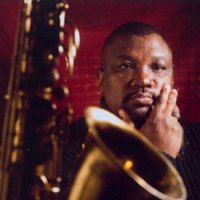
Throughout the ‘70s and '80s more and more South African musicians made their way out of the country and either formed their own bands or played with high profile artists like Makeba, Masekela, Ibrahim, and Semenya. Percussionists, horn players, singers and guitarists in the exile community gradually fed the flame of interest in South African music among artists and music lovers all around the world. These unknown and behind the scenes artists assimilated their traditions and skills in festivals, groups and scenes, using their talent to create opportunities in the bohemian lifestyle of nightclubs, concert gigs and touring circuits.
In 1986--seemingly out of nowhere--Paul Simon set off a new explosion of South African music after he slipped into South Africa to collaborate with artists and producers on his multi-platinum, Grammy award-winning Graceland album. The phenomenal success of Graceland created a more conscious awareness of the nascent dimensions of South African music in the landscape of the American music scene. A year after the release of Graceland, guitarist and singer Jonathan Butler began to attract a large following in both Great Britain and the United States with his Grammy-nominated album self-titled album. Butler’s jazz guitar and R&B vocals gave many people the impression he was an African American artist in the mold of George Benson, but for those familiar with South African jazz, the underlying influences in his guitar style were unmistakable. By the end of the decade Mbongeni Ngema took Broadway by storm with the box office smash Sarafina, and its hit song “Bring Back Nelson Mandela,” which he wrote with Hugh Masekela. Sarafina also set the stage for success of The Lion King in the mid-90s as South African music made an indelible mark on mainstream popular culture.
Even with The Lion King, Sarafina, Graceland and all the South African hits extending back to the 60s, we have barely scratched the surface of South African music, which is really a universe all its own. Many great artists and a world of incredible music waiting to be discovered by curious “Westerners.” For those fortunate enough to travel to South Africa, there’s nothing like the ambience of live South African jazz in the hot nightclubs of Johannesburg, Cape Town and Durban. Johannesburg has a fabulous “Arts Alive” festival every September, which features many great South African artists along with a few African superstars. The Cape Town International Jazz Festival also showcases some of South Africa’s best musicians, along with a lineup of some of the world's top jazz artists. But you can explore South African music a lot easier through the Internet, and find listening samples at the stroke of a keyboard. There is no definitive South African music web site, so you’ll have to take some time to research different artists but it’s well worth the effort. Some artists have elaborate Flash web sites with excellent audio samples, while others have poorly organized web pages with very little information. Quite often you can find artists and samples of their albums on Amazon.com. You may also want to start your search by listening online to Kaya FM (http://www.kayafm.co.za/ ), a Johannesburg radio station that plays an excellent variety of South African music. You can also check out Sheer Sound (http://www.sheer.co.za/index.html ) and M.E.L.T. 2000 (http://www.melt2000.com/ ), two record labels that are cultivating some of South Africa’s best up and coming talent.
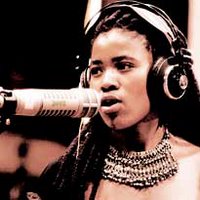
Some of my favorite artists include Zim Ngqawana, Paul Hanmer, Jimmy Dludlu, Bayete, Ladysmith Black Mambazo, Vusi Khumalo, Moses Molelekwa, Busi Mhlongo, Tsepho Thola, Thandiswa Mazwai, Jeff Maluleke, and Tu Nokwe, not to mention Hugh Masekela and Jonathan Butler. But don’t limit yourself to these choices—there’s plenty to discover on the South African side of the global village.
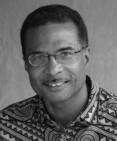

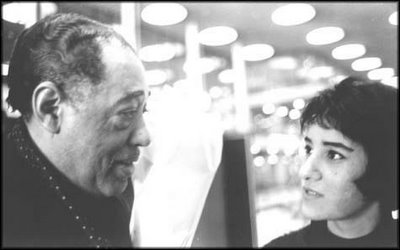
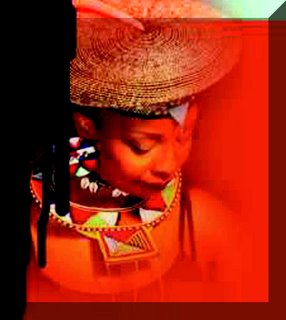
0 Comments:
Post a Comment
<< Home